Best vacation in japan
The best vacation in Japan is the one you enjoy the most. With its abundance of natural beauty, friendly people, exotic food and incredible convenience, Japan is full of unforgettable experiences to relish with your family.
It could be surprising to know that Japan is one of the best places in Asia to spend your vacation. This country has so much to offer – from beautiful art galleries, exquisite gardens, calm and peaceful temples to bustling city centres and dynamic world-class cities. We have similar wonders like Tokyo, Kyoto and Osaka in India too but the way Japanese have preserved their destinations, it looks like they appeared here just few days before you.
Japanese name, nisei, nippi is a common sight in the streets of Japan. Yuki no kaze are phenomena that have become part of daily life in Japan, and the term is used both figuratively and literally. Yuki no kaze has come to be included in various expressions, such as yuki no kaze wa fuku wo tsugu (“the cold wind of winter heralds a bountiful harvest”), which is often cited at the end of Japanese new year’s cards (nengajō). The Japanese character for “snow”, 雪 or ゆき [ 1 ] can be pronounced yuki or neko without changing the pronunciation; while written with different kanji, these two pronunciations are often used interchangeably. Being related to words meaning “accumulation” or “to pile up”, it has been applied historically to natural phenomena such as snowfall (hence “snowfall”), the arrival of snow leopards from Siberia to Korea, or even opposition from detractors.
Japan is a country that attracts plenty of tourists from all over the world. It offers a unique cultural experience, and boasts some of the most beautiful landscapes in the world. If you’re planning your next vacation and want to explore Japan’s beauty, here are some of the best places to visit:
Tokyo: Tokyo is one of the most populated cities in Asia, with a population of over 13 million people. It’s also one of the safest cities in the world, with low crime rates compared to other major cities. The city is made up of 23 special wards—each with its own distinct identity—and has many famous landmarks like Tokyo Tower, Akihabara Electric Town, and Ueno Park. For those who love Japanese food there are many restaurants serving sushi and ramen dishes throughout this city.
Kyoto: Kyoto is one of Japan’s largest cities with an area covering 688 square kilometers (265 square miles). It’s known as “The City of Traditional Culture” due to its many temples and shrines located within its boundaries such as Kinkaku-ji Temple or Ryoan-ji Temple which hold cultural significance for Buddhists around the world; however most tourists come here just because they want to see these beautiful structures while enjoying
If you are looking for a vacation where you can enjoy the best of Japan, then there is no better place than Tokyo. This amazing city has something for everyone. There is so much to do and see that you could easily spend weeks exploring all the different neighborhoods and attractions in Tokyo.
The best part about Tokyo is that it is very easy to get around on foot or by public transport. The subway system is extremely efficient and will take you almost anywhere in the city. If you need a break from walking, then there are plenty of taxis available outside major train stations or along busy streets.
If you want to see some incredible scenery, then visit Mount Fuji on the Shizuoka Prefecture side of Japan’s largest volcano; its snow-capped peak can be seen from miles away! If winter sports are more your style, then head over to Niseko Ski Resort where there are dozens of trails for skiing, snowboarding, tobogganing and sledding; don’t forget your camera!
1) Kyoto
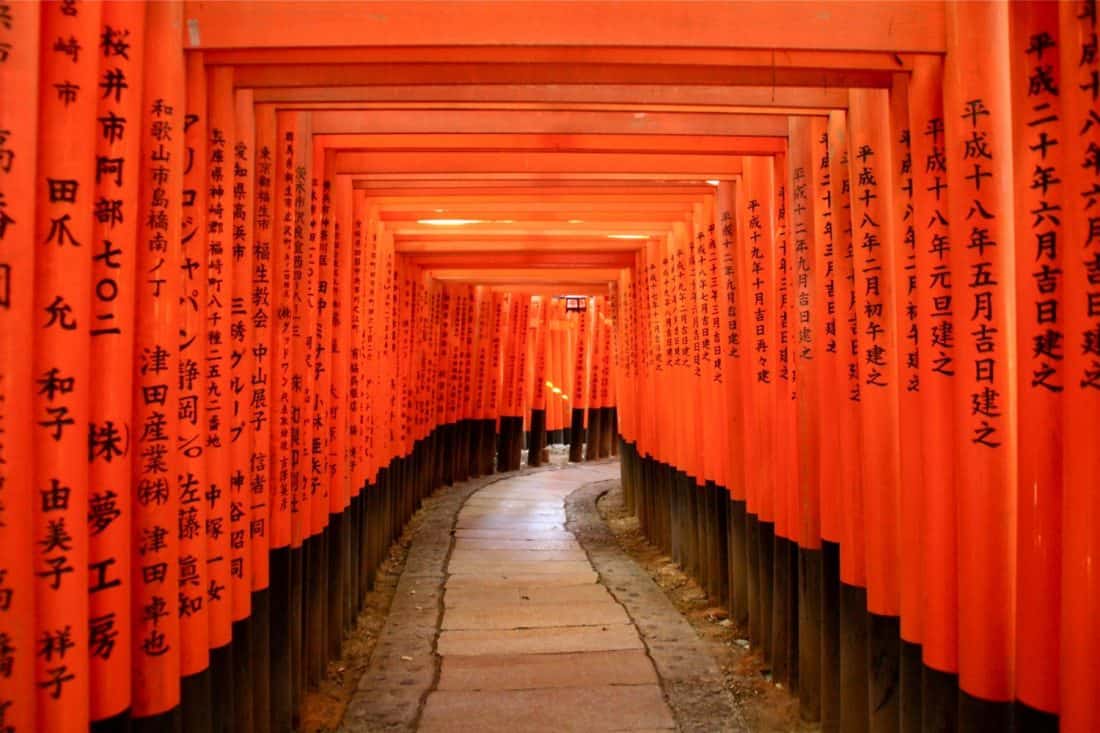
If you only have time for one Japan destination, make it Kyoto. This is traditional Japan as you imagined it—geisha in brightly coloured kimonos emerging from wooden teahouses, forests of bamboo, temples and shrines in gold and silver and scarlet, raked gravel Zen gardens, intricate feasts served on lacquered plates, graceful tea ceremonies, and markets full of intriguing but unidentifiable ingredients.
The concrete high-rises of downtown Kyoto can be disappointing, so head out towards the mountains to the surrounding neighbourhoods where you’ll find narrow stone streets, old wooden houses, monks in flowing robes, and the sounds of chanting and gongs from the many temples and shrines.
Gion is the place to spot geisha, Higashiyama has many beautiful temples to explore, and Arashiyama, up in the western hills, is one of the most traditional neighbourhoods and home to bamboo groves, quirky temples, and monkeys.
Kyoto is one of the top Japan tourist spots, so try to visit the popular temples early in the morning as they do get crowded.
In Kyoto don’t miss:
- Wandering through the red torii gates of Fushimi Inari shrine
- Learning to cook traditional Japanese cuisine with Emi
- Getting your fortune from a vending machine at Kinkaku-ji (the Golden Temple)
- Taking the train to the village of Kibune and walking across the valley to the beautiful Kurama-dera temple
- Retreating from the busy streets of Gion to the magical Yasaka-jinja at night
- Strolling the Philosopher’s Path
- Experiencing Zen Buddhist cuisine at the Tenryu-ji temple
- Getting off the beaten track at the quirky Otagi Nenbutsuji temple
- Exploring these magical Kyoto cherry blossom spots if you visit in late-March or early-April
How Long to Spend: 3 nights minimum but 5 nights would be better. We’ve spent two months in Kyoto and still haven’t done everything! A longer stay also allows you to avoid the crowds more easily (you have more early mornings available) and take some of these wonderful day trips from Kyoto.
Read: Our post on the many amazing things to do in Kyoto (and how to avoid the crowds) and our guide to Kyoto’s temples and shrines and the best vegetarian restaurants in Kyoto.
Where to stay in Kyoto: On our latest trip we stayed in an apartment in Miyagawacho, a geisha district close to Gion but much quieter. We often saw geisha and could walk to many of the city’s main attractions. Search for apartments in Miyagawacho here. Also in the area are the modern Hotel The Celestine and friendly guesthouse Tanaka-ya. If you’d prefer a traditional ryokan, Gion Hatanaka is highly rated. Find more accommodation in Kyoto here.
2) Tokyo
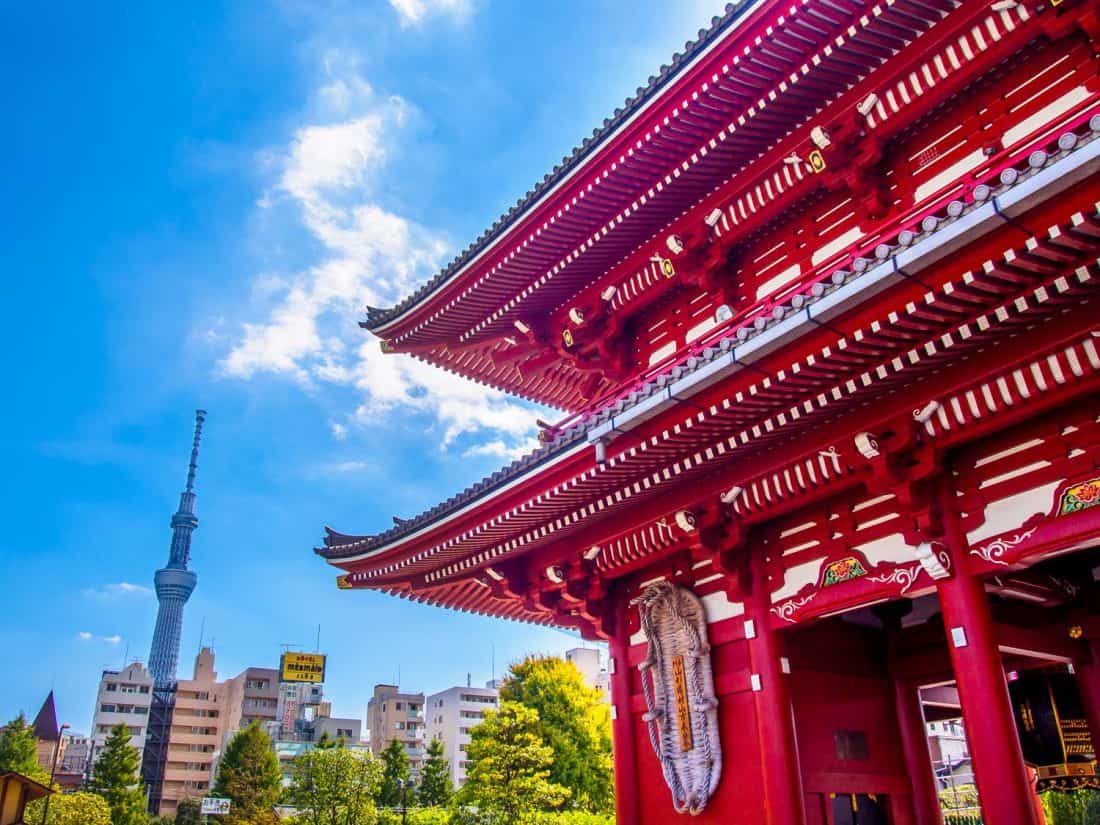
If Kyoto is the heart of traditional Japan, Tokyo is its ultramodern counterpart. It’s here you’ll find the skyscrapers, noisy arcades, busy pedestrian crossings, crazy youth fashions, and many many incredibly delicious restaurants. If all you do in Tokyo is eat, you’ll have an amazing time—even as vegetarians we ate so well.
Tokyo is also home to some of the weirdest activities we’ve ever done. From themed cafes (cats, owls, maids, robots, goats—you name it, Tokyo has it) to sensory-overload shows and arcades to cos-play go-karting.
On my first trip to Tokyo I was overwhelmed by the sprawling city and couldn’t help comparing it unfavourably to Kyoto. On repeat visits I’ve grown to love the city (the food certainly helped) and while it isn’t as attractive as Kyoto, there is so much to do that you won’t want to skip it.
In Tokyo don’t miss:
- Driving a go-kart on the real roads while dressed as your favourite character. Insanity but so much fun!
- Eating in a tiny restaurant on atmospheric Memory Lane
- Gazing at the night skyline from the free Tokyo Metropolitan Government Building in Shinjuku
- Walking across the famous Shibuya Crossing
- Gawping at the crazy fashions of Takeshita Street in Harajuku
- Visiting the brilliant DisneySea (possibly our favourite Disney park in the world!) or neighbouring Tokyo Disneyland (or both if you have two days spare)
- Getting sensory overload at the bizarre Robot Restaurant show
- Immersing yourself in the colourful digital art museum, TeamLab Borderless
How Long to Spend: 3 – 5 nights or longer if you want to take day trips (such as to Nikko, Kawaguchiko or Hakone (for Mt Fuji), and Kamakura). We’ve spent over a month here on various trips and still find new things to do. If time is limited, I would allocate more time to Kyoto than Tokyo.
Read: 18 cool things to do in Tokyo and the best vegetarian restaurants in Tokyo.
Where to stay in Tokyo: Read why I think Shinjuku is the best area to stay in Tokyo. We usually rent an apartment in Shinjuku which is great if you are on a budget. Or splurge on the luxurious Hotel Park Hyatt where the film Lost in Translation was filmed. Search for hotels in Tokyo here.
Top tip: We recommend buying a Japan Rail Pass in advance as it will save you money and it’s so easy being able to hop on and off trains all over the country. Read our Japan Rail Pass guide for full details.
3) Takayama

Takayama is an utterly gorgeous small town on the edge of the Japan Alps and one of the best less-visited places to go in Japan. I loved wandering the historic centre full of traditional wooden houses, colourful shrines, neatly shaped trees, and bright red bridges over the river.
In Takayama don’t miss:
- Wandering the old town in the early morning before the crowds arrive
- Buying delicious fruit from the morning markets
- Snacking on mitarashi-dango (rice balls grilled in soy) from a street stall
- Seeing the extravagant floats at the Festival Floats Exhibition Hall
- Visiting the Hida Folk Village to see traditional thatched houses
- Cycling through the countryside with Satoyama Experience
How Long to Spend: 2-3 nights. We had 2 nights and wished we’d had longer because there’s lots to do in the surrounding countryside. With a longer stay you could take day trips to the traditional thatched roof houses of Shirakawa-go and go hiking in Kamikochi in the Japan Alps.
Where to stay in Takayama: We stayed at Super Hotel Hida Takayama, a good mid-range business hotel near the train station. If you are on a budget K’s House Takayama is an excellent hostel. For a traditional ryokan experience Oyado Koto No Yume gets excellent reviews. Find more hotels in Takayama here.
Read: 54 Best Things to do in Japan for an Unforgettable Trip
Top tip: See our Japan 2 week itinerary for more details on combining these top places in Japan for an amazing trip.
4) Hakone
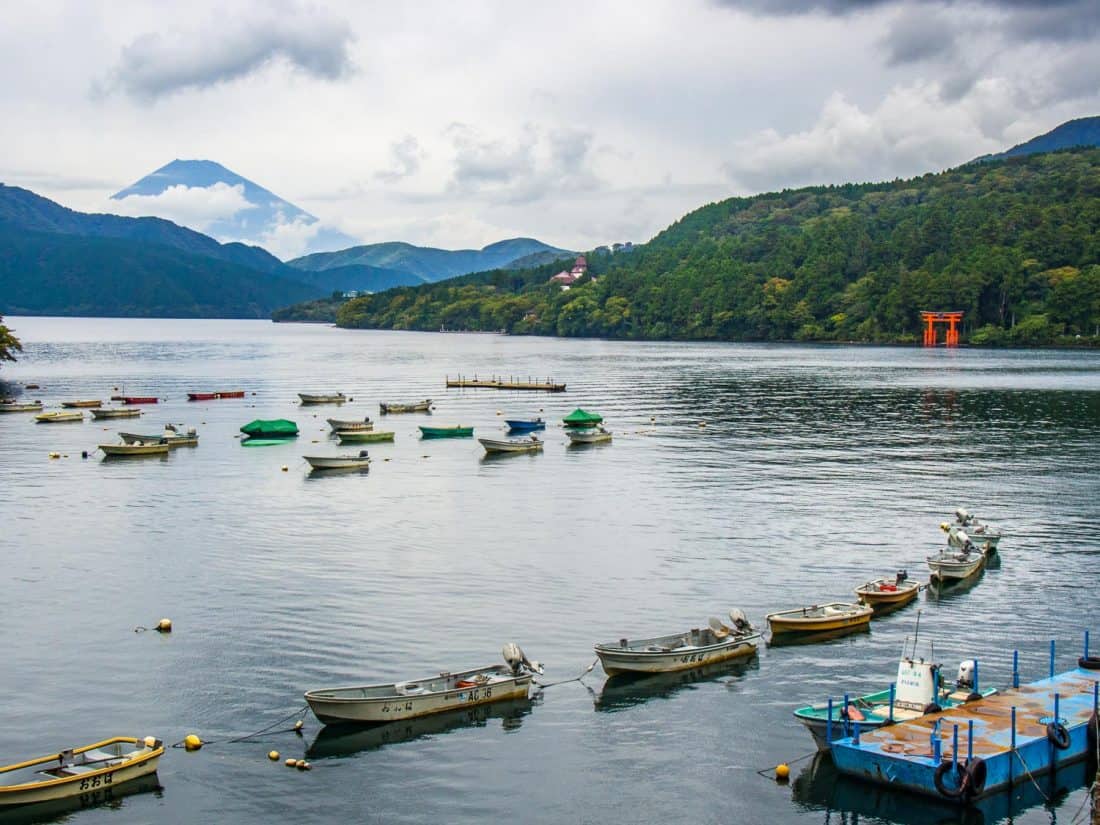
Mount Fuji is on most people’s lists of places to visit in Japan, but this must-see Japan landmark can be rather elusive and is often hidden by clouds.
There are a number of places you can see the mountain from (Kawaguchiko is another great option—see below), but Hakone is easy to reach from Tokyo and there are lots of other things to do in the area in case you are out of luck with a sighting.
Despite visiting on a cloudy, drizzly day, we were lucky that Mount Fuji emerged from the clouds above Lake Ashi and it was magical!
Hakone is also fun to visit because you can do a loop of the sights on different modes of transport—train, bus, pirate boat (yes, really!), and cable car.
In Hakone don’t miss:
- Buying a Hakone Free Pass so you can hop on and off all the transport options on the Hakone Loop.
- Seeing Mount Fuji from the lake or cable car
- Eating a black egg cooked in the hot sulphur springs at volcanic Owakudani (not really, these look gross, but the Japanese go crazy for them)
- Soaking in an onsen
- Staying in a tatami room in a ryokan (traditional inn) and enjoying an elaborate dinner
- Wandering the outdoor sculpture gallery at Hakone Open Air Museum
How Long to Spend: You could visit on a day trip from Tokyo but I recommend 1-2 nights to experience a ryokan and onsen. We had one night and did part of the loop in the afternoon we arrived and the rest in the morning. While it was just enough for the main sights, we wished we’d had longer to enjoy our ryokan.
Where to stay in Hakone: Hotel Musashiya was the best place we stayed in Japan. It’s a modern ryokan on the shores of Lake Ashi in Moto Hakone. We loved our comfortable tatami room with lake views, the indoor and outdoor onsen baths (also with lake views), and the delicious vegetarian feast we were served in our room. It was wonderfully relaxing. Find more hotels in Hakone here.
5) Kanazawa
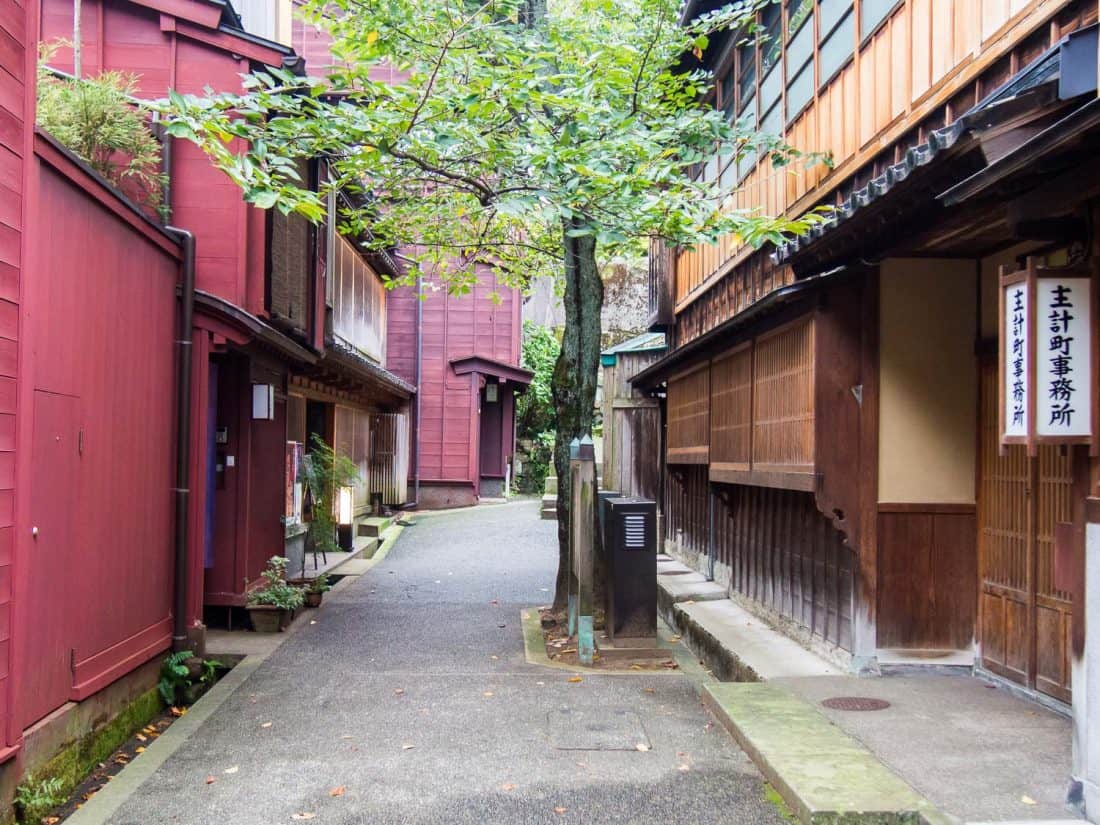
Kanazawa is one of the best cities to visit in Japan, but few foreign tourists make it here. As Kyoto grows in popularity, consider turning to Kanazawa instead for a quieter place to experience geisha districts with preserved wooden buildings.
There is also one of the most beautiful gardens in the country, a stunning castle, and many art museums to explore.
In Kanazawa don’t miss:
- Wandering Kenroku-en Garden, one of the top three gardens in Japan
- Exploring the wooden teahouses of the geisha districts Higashi Chaya and the quieter Kazuemachi and Nishi Chaya
- Experiencing a traditional tea ceremony at the exquisite Gyokusen-en Gardens
How Long to Spend: 2 nights.
Where to stay in Kanazawa: We stayed in Smile Hotel Kanazawa, a standard business hotel that had the cheapest ensuite room I could find in the centre and was walkable to all the sights. Find more hotels in Kanazawa here.
6) Nikko

Nikko is a temple town and UNESCO world heritage site in the mountains a few hours north of Tokyo and makes a cool retreat from the city. The area is famous for its vibrant autumn colours.
The temples and shrines with their vermillion gates and moss-covered stone lanterns are scattered on the wooded hillside.
The main attraction is Toshogu Shrine, a stunning complex with more than a dozen lavishly decorated red and gold buildings amongst huge, ancient cedar trees. The crowds can be overwhelming, so afterwards head to one of the quieter shrines.
In Nikko don’t miss:
- Visiting Toshogu Shrine early to avoid the crowds
- Playing games at atmospheric Futarasan-jinja
- Exploring Taiyuinbyo
- Hiking up the mountain to the peaceful Takino shrine
- Photographing the bright red Shinkyo bridge
- Munching on dango (grilled rice balls on a stick) from a street stall
- Eating sushi at Komekichi Kozushi
How Long to Spend: You could visit Nikko as a day trip from Tokyo, but it’s worth spending a night or two to explore one of the most beautiful places in Japan including hiking trails, lakes, waterfalls, and hot springs.
We had one night and wished we’d had two so that we could have visited Toshogu Shrine early on the second day.
Where to stay in Nikko: We stayed at Nikko Park Lodge Tobu Station, a good budget option conveniently located close to the train stations. For more character, you could stay in a traditional ryokan with views and outdoor onsen baths. Some highly-rated ryokans include Nikko Hoshino Yado, Okunoin Hotel Tokugawa, and Hotel Shikisai. Find more hotels in Nikko here.
7) Koya-San
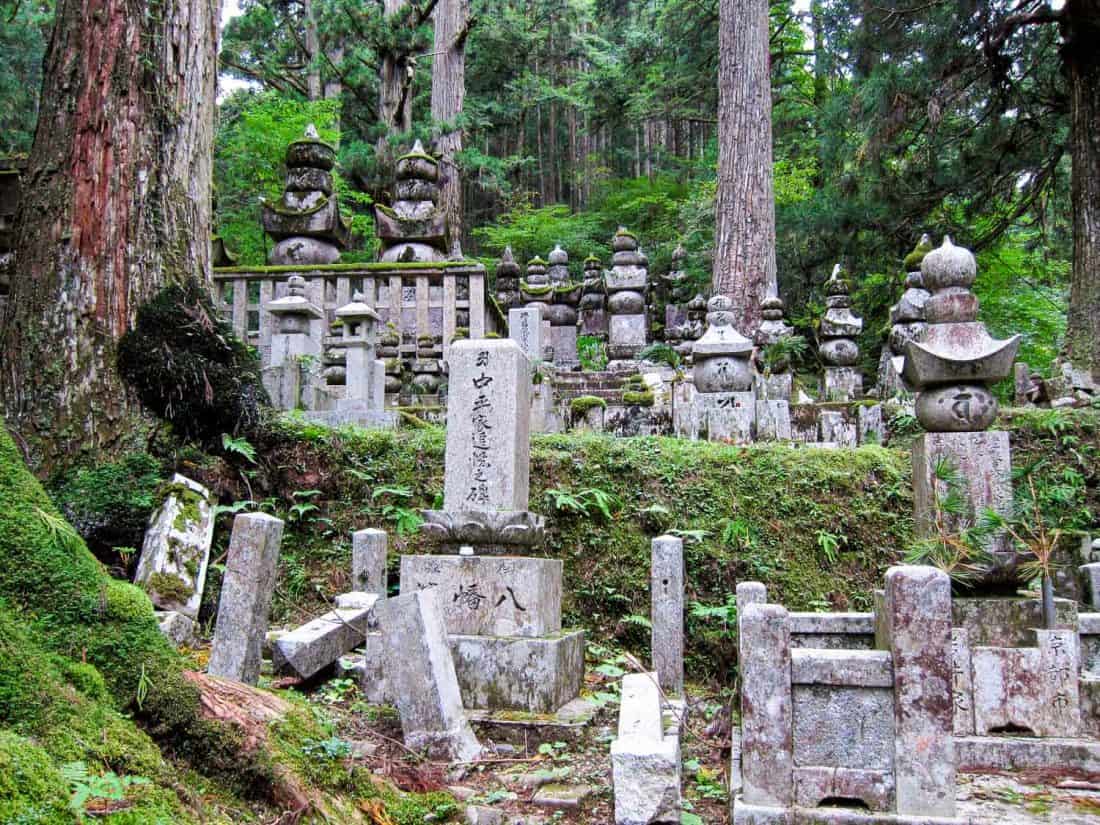
Koya-san (Mount Koya) is one of the most interesting places in Japan to experience the traditional side of the country. This secluded and sacred temple town is located in the forest-covered mountains of Kansai and is one of the best places to get a taste of life as a monk by staying in a shukubo or temple lodging.
After wandering around the otherworldly Okunoin forest cemetery, we checked into our simple tatami room at the temple, soaked in the communal onsen bath, and enjoyed a delicious shojin ryori vegetarian Buddhist meal. In the morning we were up early for the chanting and meditation ceremony with the monks.
A temple stay at Koya-san is a fascinating experience and well worth the detour from Osaka or Kyoto.
How Long to Spend: 1 night.
Read: Sleeping with Monks: A Night in a Japanese Temple in Koya-San
Where to stay in Koya-san: We stayed in Haryo-in, the cheapest temple accommodation, but it’s quite basic and I’d recommend paying more to stay at one of the more traditional temples like 1000-year-old Eko-in which gets superb reviews. Find more temple lodgings here.
8) Tsumago
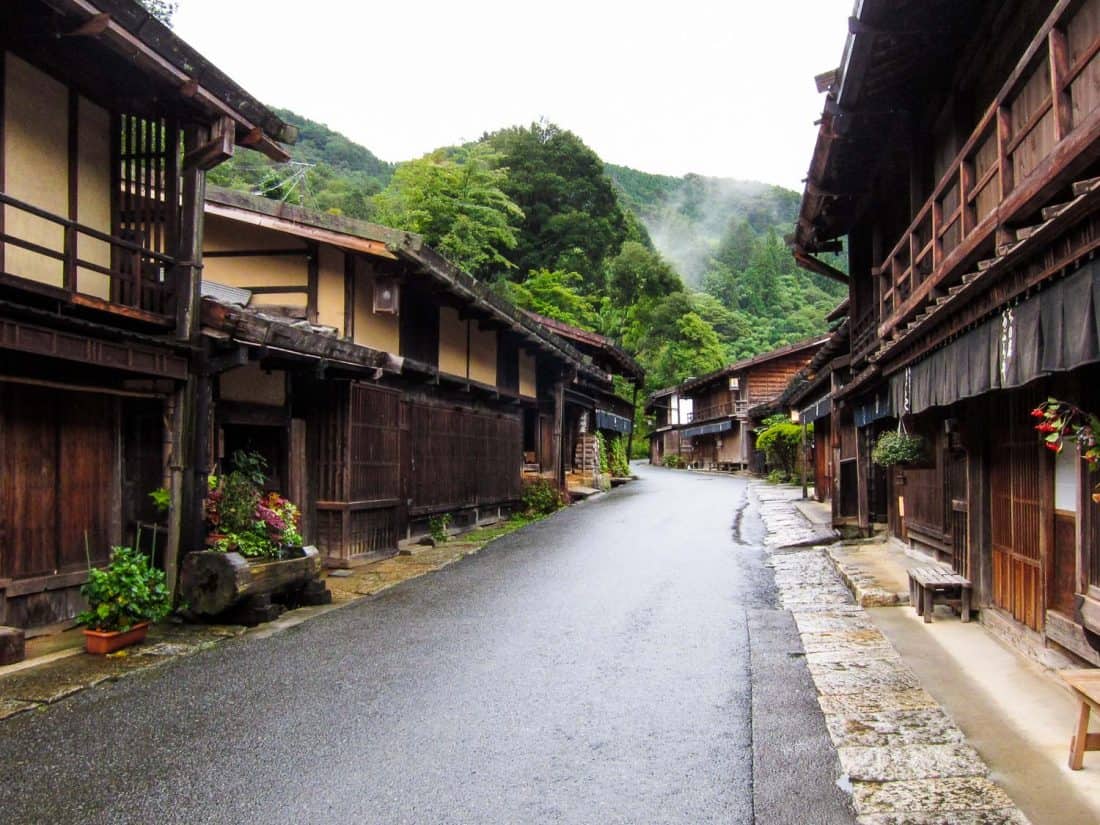
Tsumago is a picture-perfect traditional mountain village in the Kiso Valley. It is one of the best-preserved post towns in Japan and you feel like you’ve stepped back in time on the traffic-less streets of beautifully restored wooden inns.
During the Edo period 300 years ago, Tsumago was a stop on the Nakasendo Way between Kyoto and Edo (now Tokyo). You can hike part of this trail to the village of Magome in about two to three hours. Unfortunately, a typhoon prevented us doing this, but it’s supposed to be a scenic and easy walk.
How Long to Spend: 1-2 nights. If you can arrive early enough on the first day to hike the Nakasendo Way in the afternoon, then 1 night is enough as it’s a tiny village.
Where to stay in Tsumago: In keeping with the Edo-era atmosphere, stay in a traditional ryokan or minshuku (a simpler family-run inn). We stayed at the basic Minshuku Shimosagaya. Neighbouring Magome has more choice including the budget Chaya Hotel or historic Tajimaya.
9) Nara
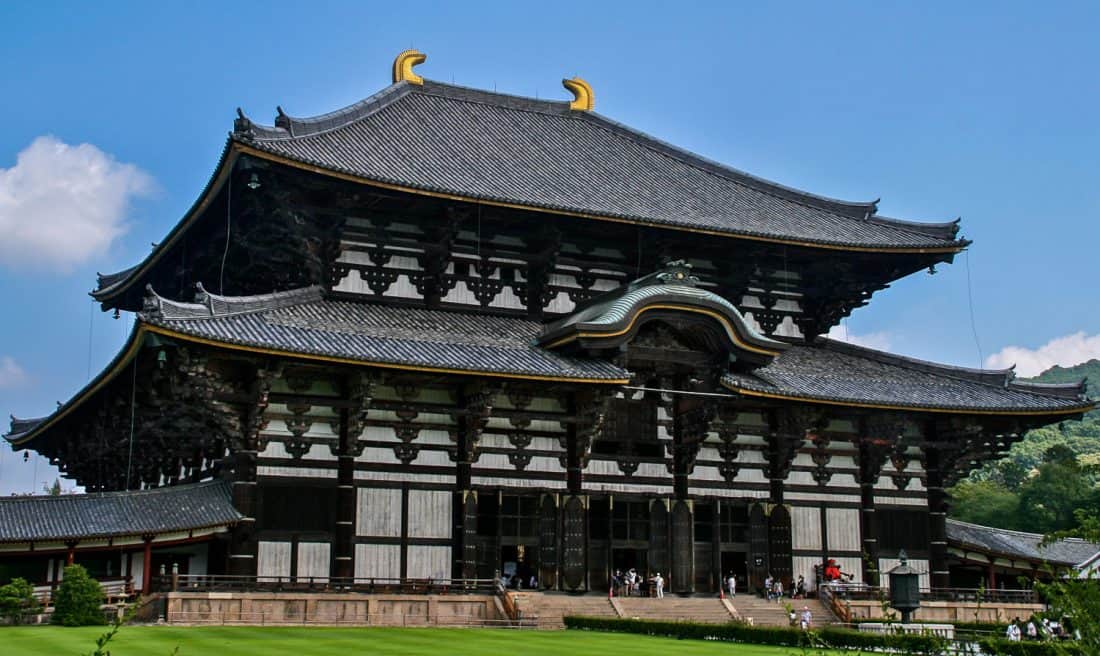
Nara was Japan’s first permanent capital and is full of historic treasures including many UNESCO world heritage sites. It’s one of the top Japan attractions and makes a rewarding day trip from Kyoto to visit the temples and wild deer in Nara Park.
The Daibutsu-den (Hall of the Great Buddha) at Todaiji is the main sight—it’s the largest wooden building in the world and nothing prepares you for the immense sight. Inside is the 15-metre tall gold and bronze statue of Buddha that dates back to 751.
How Long to Spend: Most people visit as a day trip from Kyoto. You can see the highlights in half a day but a full day is better.
10) Hiroshima

Come to pay your respects to the victims of the atomic bombing at Hiroshima’s moving Peace Memorial Museum and Park and stay to explore the modern city that was almost entirely rebuilt after World War II.
Hiroshima is usually combined with a visit to the famous floating torii gate at Itsukushima shrine on nearby Miyajima Island (the gate is currently under renovation).
You’ll also want to try the delicious local speciality okonomiyaki, a thick pancake of batter, vegetables and noodles.
How Long to Spend: 1-2 nights is enough to visit the Peace Memorial Museum and Miyajima Island or you could visit as a long day trip from Kyoto, Osaka or Okayama.